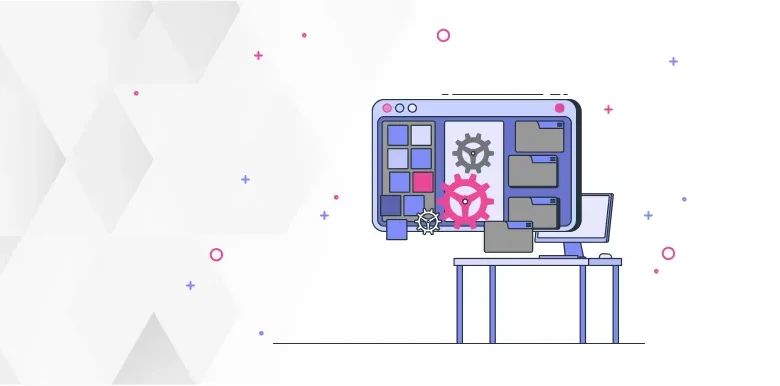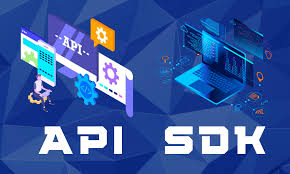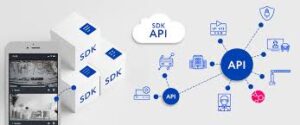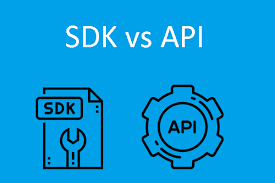
SDK vs API: What’s the Difference?
APIs (Application Programming Interfaces) are utilized for communication between different applications, while an SDK (Software Development Kit) is a toolkit that provides resources and tools for building applications and incorporating various features. Typically, an SDK application will include one or more APIs to fulfill its purpose.

SDK vs API
Let’s delve into the distinction between APIs and SDKs:
- API (Application Programming Interface):
- An API is a set of rules and protocols that allows different software applications or systems to communicate with each other.
- It defines how requests and responses should be structured, enabling seamless interaction between software components.
- APIs are like the interfaces through which applications can access specific functionalities or data from other services or platforms.
- They are typically language-agnostic and can be used across different programming languages.
- Examples of APIs include:
- REST APIs: Used for web services, where clients make HTTP requests to retrieve or manipulate data.
- Database APIs: Allow applications to interact with databases.
- Third-party APIs: Offer access to external services (e.g., social media APIs, payment gateways).
- APIs are essential for building modular, interconnected software systems.
- SDK (Software Development Kit):
- An SDK is a comprehensive set of tools, libraries, and resources provided by a platform or framework to simplify software development.
- It includes everything developers need to create applications for a specific platform or ecosystem.
- Key components of an SDK:
- Compiler: Translates code from one language to another.
- Code samples: Concrete examples of application functionality.
- Code libraries (framework): Pre-built code sequences for common tasks.
- Testing and analytics tools: Help assess application performance.
- Documentation: Provides instructions for developers.
- Debuggers: Aid in identifying and fixing errors.
- Often, an SDK also includes at least one API, as APIs allow applications to communicate and work together.
- Examples of SDKs:
- iOS SDK and Android SDK for mobile app development.
- .NET SDK for enterprise software and web applications.
- Cloud provider SDKs (e.g., AWS SDK, Google Cloud SDK).
- Combining APIs and SDKs:
- No need to choose: In practice, SDKs often contain APIs. They complement each other.
- APIs define how platforms work together, while SDKs provide the tools to build applications.
- Developers use both to enhance functionality, improve user experience, and create robust software.
Remember, APIs and SDKs empower developers to build powerful applications by leveraging existing services and tools. Whether you’re making HTTP requests to an API or using an SDK’s libraries, both play crucial roles in modern software development.
SDK vs API integration:
SDK vs API: How do they work?
Let’s explore the differences between APIs and SDKs and understand how they work:
- API (Application Programming Interface):
- An API enables communication and data sharing between different software applications or systems.
- It defines rules and protocols for how requests and responses should be structured.
- APIs allow applications to interact with external services, retrieve data, and perform specific tasks.
- They are language-agnostic and can be used across different programming languages.
- Examples of APIs include:
- REST APIs: Used for web services, where clients make HTTP requests to retrieve or manipulate data.
- Database APIs: Allow applications to interact with databases.
- Third-party APIs: Provide access to external services (e.g., social media APIs, payment gateways).
- SDK (Software Development Kit):
- An SDK is a comprehensive set of tools, libraries, and resources provided by a platform or framework.
- It simplifies software development by offering everything needed to create applications for a specific platform.
- Key components of an SDK:
- Compiler: Translates code from one language to another.
- Code samples: Concrete examples of application functionality.
- Code libraries (framework): Pre-built code sequences for common tasks.
- Testing and analytics tools: Assess application performance.
- Documentation: Provides instructions for developers.
- Debuggers: Identify and fix errors.
- Often, an SDK includes at least one API, as APIs allow applications to communicate and work together.
- How an SDK Works:
- Developers purchase, download, and install the SDK for their chosen platform (e.g., iOS, Android, .NET).
- The SDK provides APIs and development tools within an integrated development environment (IDE).
- Developers use instructions, documentation, code samples, and testing tools to build applications efficiently.
- SDKs are valuable for mobile app development, enterprise software, and web applications.
- Use Cases for SDKs:
- Mobile App Development: SDKs like Apple’s iOS SDK or Google’s Android SDK simplify mobile app creation.
- Enterprise Software: SDKs are essential for building large-scale applications.
- Web and Desktop Software: SDKs like Microsoft’s .NET SDK are commonly used.
In summary, APIs facilitate communication between applications, while SDKs provide a comprehensive set of tools for creating applications on specific platforms. Both play crucial roles in modern software
What are the benefits of SDK vs API?

SDK vs API
Let’s explore the benefits of APIs versus SDKs:
- API (Application Programming Interface):
- Connectivity and Integration: APIs allow different software systems to communicate seamlessly. They enable apps to interact with external services, retrieve data, and perform specific tasks.
- Modularity: APIs promote modularity by breaking down complex functionalities into smaller, reusable components.
- Language-Agnostic: APIs are language-agnostic, making them accessible across different programming languages.
- Third-Party Integration: Developers can leverage third-party APIs (e.g., social media APIs, payment gateways) to enhance their applications.
- Cost-Effective: Using existing APIs saves development time and resources.
- Examples: REST APIs, database APIs, and web service APIs.
- SDK (Software Development Kit):
- Comprehensive Tools: SDKs provide a complete set of tools, libraries, and resources for a specific platform (e.g., iOS, Android, .NET).
- Standardization: SDKs ensure standardized development practices, improving consistency across applications.
- Faster Development: Developers can jump-start their projects using pre-built components (e.g., code libraries, compilers).
- Rich Documentation: SDKs come with detailed documentation, making it easier for developers to understand and use them.
- Examples: Apple’s iOS SDK, Google’s Android SDK, and Microsoft’s .NET SDK.
- Combined Benefits:
- Enhanced User Experience (UX): Both APIs and SDKs contribute to better UX by enabling feature-rich applications.
- Cost Savings: APIs and SDKs reduce development costs by leveraging existing solutions.
- Customization: SDKs allow companies to create features tailored to their product’s needs.
- Revenue Models: APIs can open new revenue streams for firms that create and monetize APIs.
In summary, APIs facilitate communication, while SDKs provide a comprehensive toolkit for building applications. Choosing between them depends on specific development requirements and goals





